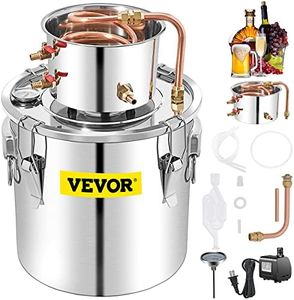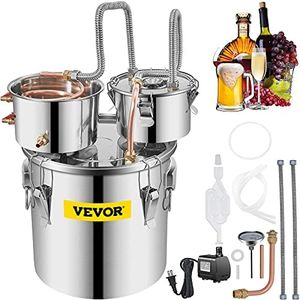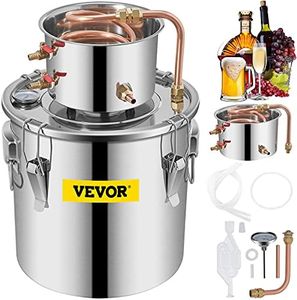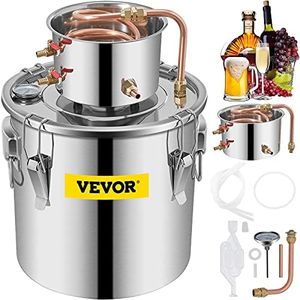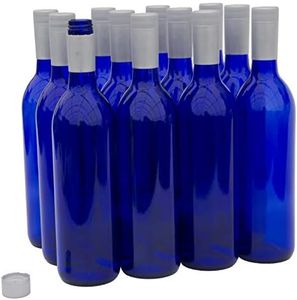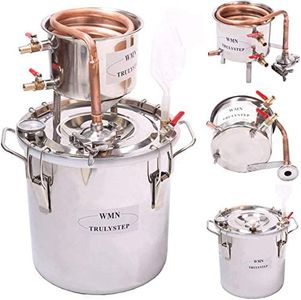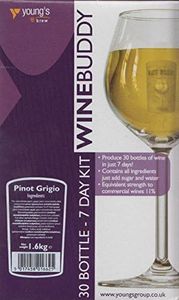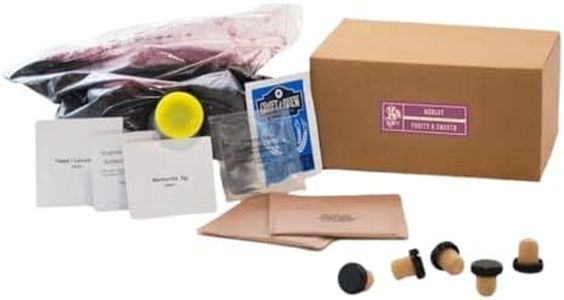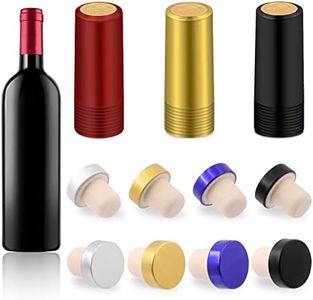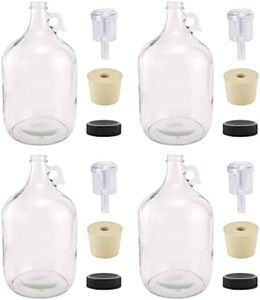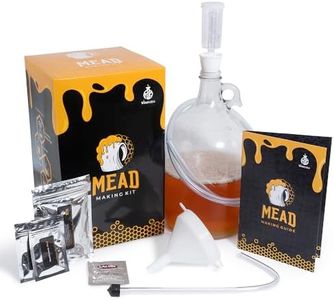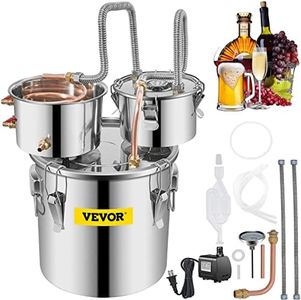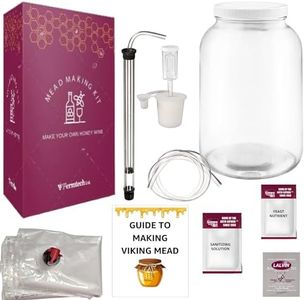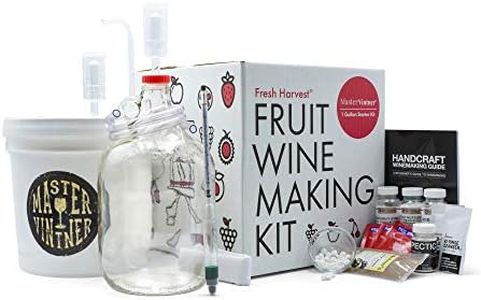We Use CookiesWe use cookies to enhance the security, performance,
functionality and for analytical and promotional activities. By continuing to browse this site you
are agreeing to our privacy policy
10 Best Wine Making Kits
From leading brands and best sellers available on the web.By clicking on a link to a third party's website, log data is shared with that third party.
Buying Guide for the Best Wine Making Kits
Choosing a wine-making kit can be a fun and rewarding way to start crafting your own wine at home. The right kit will make the process easy, match your skill level, and allow you to experiment with flavors that you enjoy. As you consider your options, focus on features that relate to ease of use, quality of components, and the style of wine you’d like to make. Understanding each key element of a wine-making kit will help you get started confidently and set you up for a successful first batch.Batch SizeBatch size refers to the volume of wine a kit will produce, typically measured in gallons or liters. This is important because it determines how much wine you’ll end up with, which impacts both your supply and how much space or equipment you’ll need. Smaller kits, producing around 1 gallon, are good for beginners and those who want to experiment with different types of wine without committing to large amounts. Larger kits (5 gallons or more) are more suitable for serious hobbyists or those looking to share wine with friends and family. Choose a size that fits both your drinking habits and storage space.
Ingredient Quality and TypeIngredient quality covers the freshness and origin of grape juice, concentrates, or fruit provided in the kit. Kits may come with pure grape juice, juice concentrate, or fruit blends—this has a direct impact on the final flavor and authenticity of your wine. Pure juice kits are usually preferred for the best flavor, while concentrates are more affordable and easier to store. If you’re particular about wine styles or want a specific taste, look for kits with high-quality, single-origin ingredients. Beginners may find concentrated kits easier to handle, while those with more experience or higher expectations may value pure juice.
Included EquipmentThe equipment in a kit covers everything from fermenters to airlocks, siphoning tubes, and bottling apparatus. This is essential because it determines how ready-to-go the kit is and whether you’ll need to buy extra items. Some kits are ‘complete’ and include all necessary tools, making them ideal for first-timers. Other kits may only include ingredients, assuming you already own the equipment. Beginners should look for comprehensive kits, while those with some home-brewing experience may already have their own gear and just need the consumables.
Style and Type of WineWine-making kits are usually specialized to produce certain types of wine, such as red, white, rosé, or even specialty fruit wines. This is important because the finished product should match your taste preferences. Kits may also vary by the traditional style—for example, Merlot, Chardonnay, or Cabernet Sauvignon. If you’re new to wine-making, choose a style that you already enjoy drinking; if you’re adventurous, look for kits that offer unique or seasonal flavors. Let your personal taste guide your choice, as you’ll want to enjoy your creation.
Fermentation Time and Difficulty LevelFermentation time indicates how long it takes from start to finish to produce wine, ranging from a few weeks to several months. Difficulty level refers to how much hands-on work and attention to detail the kit requires. Shorter kits are great if you’re eager for quick results and instant gratification, while longer processes can yield better, more complex flavors but require more patience and attention. Beginners should look for easy, quick kits with clear instructions, while those wanting a traditional, nuanced wine experience might opt for more advanced kits with longer fermentation periods.
Additives and Processing AgentsKits may include additives such as yeast, stabilizers, clarifiers, and sulfites. These are important for ensuring proper fermentation, wine clarity, and preservation. Understanding what’s included helps you anticipate the steps you’ll need to follow and ensures food safety and shelf-life. Kits with all necessary additives included are more convenient—if you prefer more control or wish to avoid certain chemicals (like sulfites), look for kits that offer customization or explain alternatives. Have your preferences and any sensitivities in mind when considering which kit to choose.

